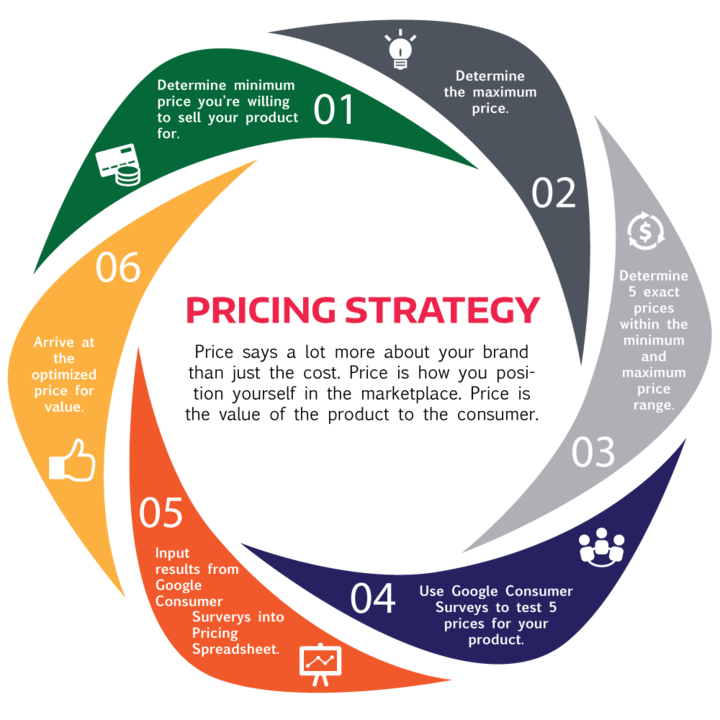Exactly how to Examine and Maximize Your Pricing Strategy for Better Results
Exactly how to Examine and Maximize Your Pricing Strategy for Better Results
Blog Article

Master Effective Rates Approaches to Make The Most Of Revenue
In the ever-evolving landscape of business, mastering effective pricing strategies is crucial for businesses intending to maximize earnings. A nuanced understanding of pricing psychology can substantially affect consumer actions and investing in choices. Utilizing value-based and vibrant rates designs allows companies to adjust to market fluctuations and customer view. However, the complexity of rival analysis and ongoing efficiency evaluation increases vital concerns about the sustainability of these methods. What specific methods can be applied to make sure lasting success and client loyalty in this competitive setting?
Understanding Pricing Psychology
Understanding pricing psychology is important for services intending to optimize their prices methods. This field examines how customers regard costs and just how these perceptions influence their buying choices. Key principles in prices psychology consist of the anchoring result, where the first cost presented works as a recommendation point for customers, and the idea of price level of sensitivity, which varies amongst different consumer sectors.
Additionally, organizations can utilize the concept of viewed value, where the regarded benefits of a product and services can justify a greater cost factor. Premium prices can create an aura of exclusivity, attracting consumers that link greater rates with premium high quality. On the various other hand, psychological pricing, such as setting a rate at $9.99 as opposed to $10, can substantially affect customer behavior by making prices show up more appealing.
Moreover, scarcity and urgency can enhance the perceived value of products, triggering quicker getting choices. Comprehending these emotional triggers enables organizations to create pricing approaches that not only drive sales yet additionally foster client loyalty. Therefore, understanding rates psychology is necessary for effective rates method formulation, leading to boosted earnings and market positioning.
Implementing Value-Based Prices

Next, section your consumers based on their determination to pay and the worth they regard. By doing so, you can customize offerings and prices strategies to align with various sections.
Continuously monitor market conditions and customer responses to fine-tune your rates technique over time. By executing value-based prices, services can improve profitability while fostering lasting consumer commitment.
Exploring Dynamic Prices Models
In today's quickly altering market landscape, dynamic rates versions have become an effective technique for services seeking to maximize revenue and reply to variations sought after. These designs permit companies to change their prices in real-time based on numerous factors such as client actions, market trends, and inventory levels. By leveraging information analytics and algorithms, organizations can determine optimum prices points that take full advantage of sales while staying affordable.
Dynamic prices can take numerous kinds, including time-based prices, where costs rise and fall useful content based upon time of day or season, and demand-based prices, which adjusts costs according to current consumer need. This versatility not just improves productivity yet also boosts consumer fulfillment by supplying prices that show real-time market conditions.
Executing dynamic rates calls for a durable technical infrastructure and a deep understanding of consumer segments. Transparent interaction about pricing modifications can assist mitigate consumer dissatisfaction and foster trust fund, eventually leading to continual productivity in an affordable market.
Studying Competitor Prices
Monitoring competitor rates is important for organizations aiming to maintain a competitive side in their respective markets. By evaluating competitors' rates approaches, firms can determine market fads, understand customer preferences, and adjust their rates appropriately. This evaluation involves gathering data on rivals' prices, marketing techniques, and product offerings to inform pricing choices.
To properly examine competitor prices, organizations must use different devices and techniques, such as rate monitoring software application, marketing research records, and customer responses. This data can disclose just how rivals position their items and solutions, permitting companies to separate their offerings or adopt comparable methods to continue to be relevant.
Furthermore, it is essential to categorize competitors into direct and indirect competitors. Straight competitors use similar service or products, while indirect rivals might meet the same consumer need with various solutions. Recognizing the subtleties in between these teams will certainly make it possible for businesses to tailor their pricing techniques better.
Eventually, continuous rival pricing analysis is vital for making educated pricing decisions. It allows businesses to stay agile in action to market changes, ensuring they can seize possibilities i was reading this and reduce threats related to rates approaches.
Examining Pricing Efficiency
Recognizing exactly how competitor rates influences market dynamics brings about an all-natural emphasis on assessing prices performance within one's own company. This assessment is essential for recognizing areas of stamina and opportunities for improvement, eventually improving earnings.

Additionally, conducting routine prices audits can disclose discrepancies between anticipated and actual performance. This entails contrasting prices information across various sections and networks to comprehend differences and identify trends. Incorporating client feedback can give understandings into viewed worth versus actual rates, making certain positioning with market expectations.
Lastly, leveraging data analytics devices can promote deeper understandings into prices efficiency, enabling organizations to make data-driven changes (Pricing Strategy). By continually reviewing rates performance, companies can adjust to market modifications and maximize their techniques, making certain continual success in a competitive landscape
Final Thought
By leveraging prices psychology, organizations can boost perceived worth and tailor rates to diverse customer segments. The fostering of vibrant and value-based pricing models helps with real-time changes based on need and client desire to pay.
Recognizing prices psychology is critical for organizations aiming to optimize their pricing approaches. Recognizing these psychological triggers makes it possible for organizations to create rates techniques that not just drive sales however additionally foster client loyalty. Therefore, mastering pricing psychology is necessary for reliable prices method formula, leading to enhanced success and market Recommended Site positioning.
By assessing competitors' prices strategies, firms can determine market patterns, recognize consumer preferences, and readjust their rates as necessary. By leveraging pricing psychology, organizations can boost regarded value and tailor pricing to diverse consumer sectors.
Report this page